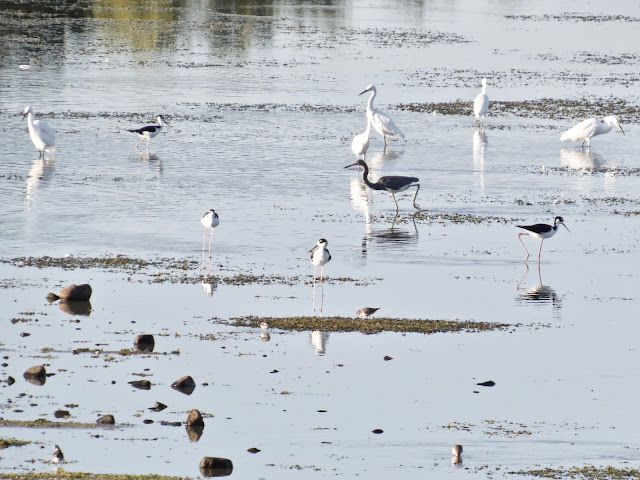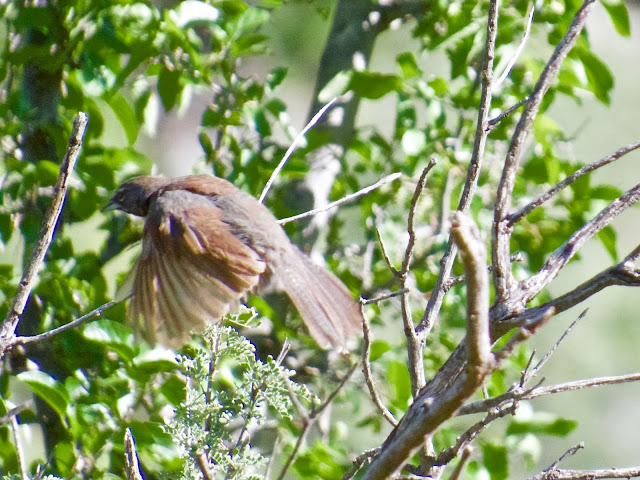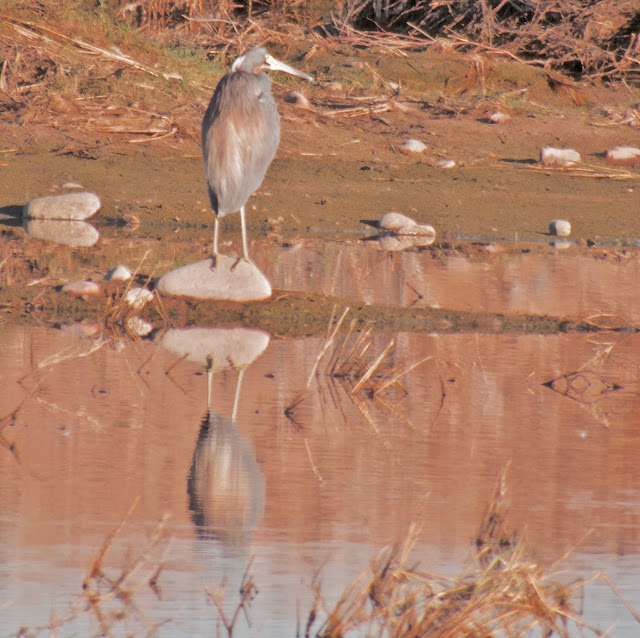Sunday, August 13th
Summer birding in Arizona plays havoc with my sleep patterns! When daylight begins at 5 a.m., the alarm is often set for 2:30 or 3:00 in order to wake up sufficiently to get out the door with my gear and drive to a specific birder meeting place to continue on to a distant location.
The sun is now rising later, but the drive will be long. After planning my little excursion to see three specific birds, I contacted Hinde Silver to see if she had a free day to join me. She was up for it, so I picked her up at 4:15 a.m. despite the continuing drizzle of rain. This summer’s monsoon has behaved as I always expected it would - but never did. Instead of many rainy days, most of the past summers’ years have been full of dust storms in the Phoenix area so great they make the national news: Wave of Dust One Mile High and Five Miles Wide! They’re called: DRY MONSOONS. This year: WET MONSOON! Lots and lots of rainy days —very unusual here in the desert.
Monsoon’s heavy rains
Too much for roadway storm drains
Cars not in their lanes
Heading to the I-19 corridor south of Tucson, I hoped we could drive out of the dark clouds and rain. It didn’t clear until we reached Tucson but then, as the sun rose, we could see white clouds and glimpses of clear sky ahead.
I tend to look for birds that can be found seasonally and that I particularly like. Without success, I had already searched known locations in the Phoenix West Valley for the Black-bellied Whistling Ducks and the Tempe Town Lake for the Brown Pelican that had taken up residence there the past couple years. With both being reported at the Amado Water Treatment Ponds, that was our first stop at 6:50 a.m.
The BROWN PELICAN was easy to see perched out on one of the mechanisms in the water.
 |
| BROWN PELICAN |
It also lifted and flew around a couple times prior to returning to its “spot”.
Since the ducks I wanted to see were not on the water, I set up the spotting scope to search for the BLACK-BELLIED WHISTLING DUCKs that had been reported there - with young. (Less chance of them leaving the area before I arrived!)
And, there they were-all the way across the pond! Two adults and a couple young at water’s edge on a bit of mud and stones in front of the reeds.
 |
| BLACK-BELLIED WHISTLING DUCKS (above and below) |
Then, it was on to Montosa Canyon farther north off of I-19 where we picked up Mt. Hopkins Road, following it past the Smithsonian Astrophysical Observatory base camp buildings to the dirt road leading into another rich birding area.
Normally, the Mexican Five-striped Sparrow is usually found in one spot way south toward the border in California Gulch or other canyons there. This year they seemed to be found at the confluence of the gulch with Warsaw Canyon — all of which requires very high clearance four-wheel drive vehicles.
The first time I saw this bird was in 2014 on a Melody Kehl guided trip into California Gulch - a bone jarring ride over rocks called a road. Being Melody’s last trip into the Gulch that year, she knew the birds would be harder to see but told us she had never “dipped” on them. This particular late afternoon trip stretched into evening as we could hear the birds skulking around thick shrubs. Finally, a few other species began to perch up and sing and then, the FIVE-STRIPED SPARROW did likewise. It was a quick look before the bird dove down into the shrubs again, but enough to call it a LIFE BIRD, despite it being an unsatisfactory view (for me).
Today, I hoped to see my second such Mexican bird that was being reported in various locations farther north (like Montosa Canyon and Box Canyon) where ordinary birders could drive. Possibly, our very wet monsoon (with water and more shrubs) has enabled them to come north.
Other birders were present when we arrived and told us where they had seen the bird and where they were presently looking. We didn’t see IT, but did see lots of other good birds. After checking out - without success - the specific locations these other birders had first seen it, Hinde and I just wandered up the main dirt road listening…listening.
Rarely do I use feedback these days, but to make sure I knew the song I was listening for, I played it briefly. Then waited…waited....nothing. As we turned to walk back toward the car, I couldn’t believe my eyes.
The FIVE-STRIPED SPARROW had flown in and perched on a bare limb of a dead shrub behind us where it sat quietly looking right back at us!
It provided us ample viewing over the next several minutes. I took photos; we watched it preen; we watched it turn this way and that. NOW, with this, just my second time seeing this stealthy Mexican bird, I was overjoyed with the looks it gave. Five photos of the FIVE-STRIPED SPARROW below:
 |
| Preening its toe |
It had been three years since I had re-visited Montosa Canyon after a “lost and found” incident that just a few of my birding friends know about. The incident made us cancel our first-scheduled trip with Melody Kehl for this bird so we had caught her final trip into California Gulch that year. Today, with such great looks at the FIVE-STRIPED SPARROW, I felt a poetic resonance. It also felt good to bird this area again.
After about an hour watching hummingbirds and others at the Santa Rita Lodge feeding station, Hinde and I headed back home as dark clouds began to gather down south. Nice and toasty under the desert sun when we returned home.
* * *
View this checklist online at http://ebird.org/ebird/view/checklist/S38630875

































